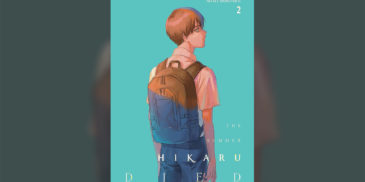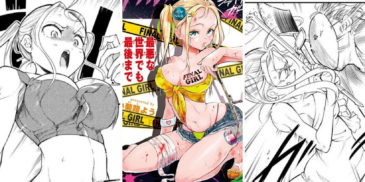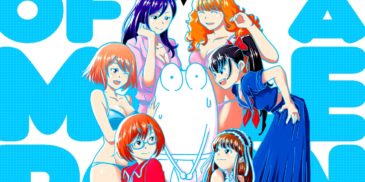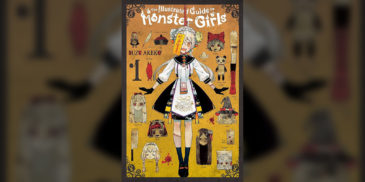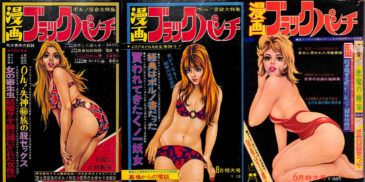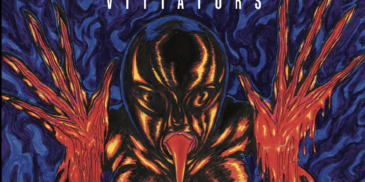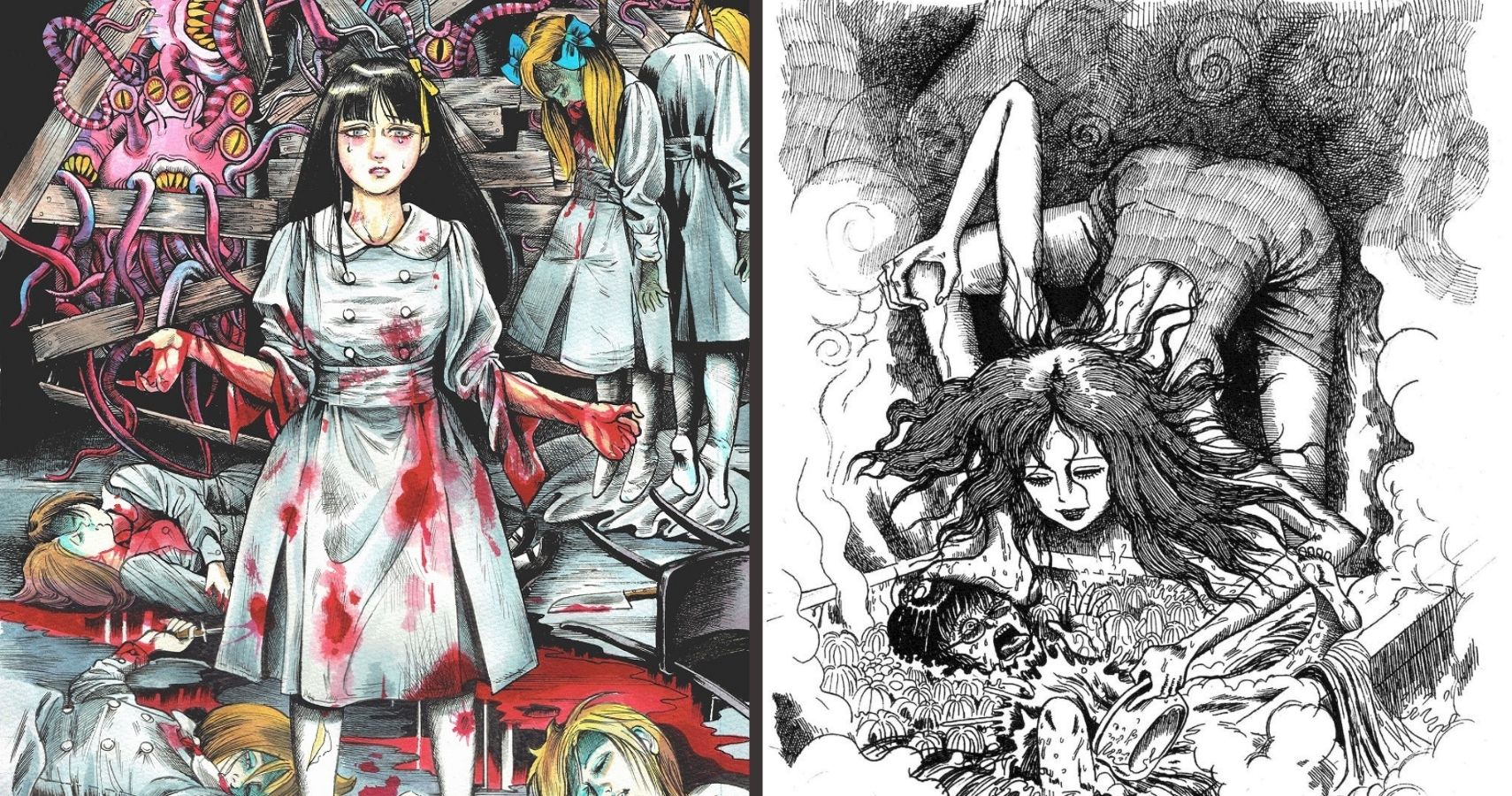
Horror manga has seen a steady surge in popularity with the likes of Junji Ito, making it to international recognition and closing the gap of mainstream versus the underground. To those who choose to dig a bit deeper, names such as Hideshi Hinio, Suehiro Marou, Shintaro Kago have also come to gain some notoriety within the genre in the more dedicated fanbase. Unfortunately, even these horror mangaka have much of their work not translated or available, despite their mastery of the craft being revered amongst die-hard fans.
However, at the bottom of the ‘iceberg’ of horror manga, there are those that have seen none of their work translated, disappointing fans unable to read Kanji scans as they may only be appreciated for the undeciphered art. One example of a mangaka resting in obscurity, albeit presenting stunning visions of horror, is Noroi Michiru.
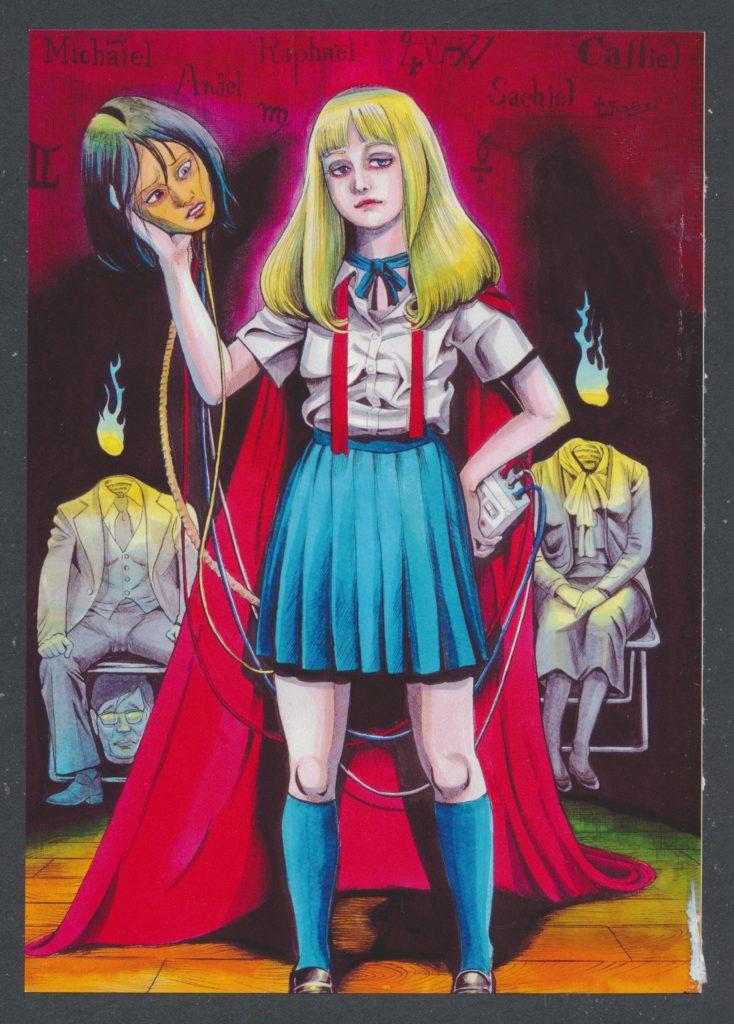
For fan translations, the only short story that currently exists (as far as I could discover) to read translated into English is a segment from Shoki Kessakusen, Volume 1: Luger-The Dwarf. It follows a young girl forming a pact with a dwarf in order to escape an abusive upbringing. The short is slightly surreal and also contains elements of the erotic grotesque with the major feature of the dwarf being an erection that towers over his head. At 16 pages there is not much to gleam from Michiru as a mangaka within this short other than a strong visual direction and a sense of humor.
According to Baka-Updates, Michiru is influenced by the likes of Hideshi Hino we have previously covered. One aspect of Hino’s work that often gets overlooked is the morbid sense of humor brought through a broken persona of himself as a storyteller that is interjected into a lot of his work. In this regard, the one short from Michiru does have the same kind of pacing and sense of self-awareness needed to express sharp dark wit to come across as playful instead of being a provocateur.
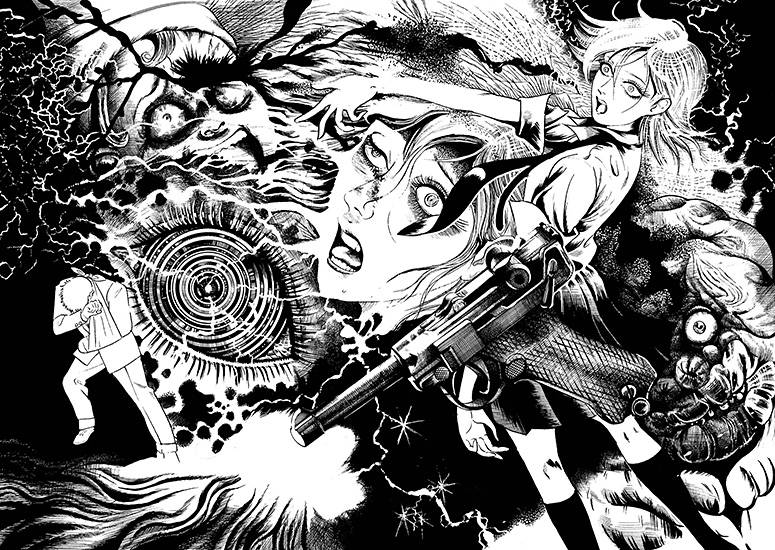
In terms of art, it is harder to pin down the influences of Michiru, although there exist homages to the works of Umezu, Hino, and Ito. It seems apparent his aesthetic – while feeling familiar – has been defined to his own unique style. Looking through his known releases, the mangaka also draws inspiration from both folklore and urban legends with titles dedicated to yokai or iconic creatures such as Kuchisake-onna, The Slit-Mouthed Woman (which has a surprisingly fun film adaptation we reviewed).
So, what can we learn from what little info there is available in English? Sadly, the answer is not much. However, as interest in manga continues to grow and the industry booms, the importance of buying manga geared towards the obscure is more important than ever for fans who want diversity within the genre. Yes, we all love Junji Ito, but the amount of talent out there that rests underexplored is unfortunate.
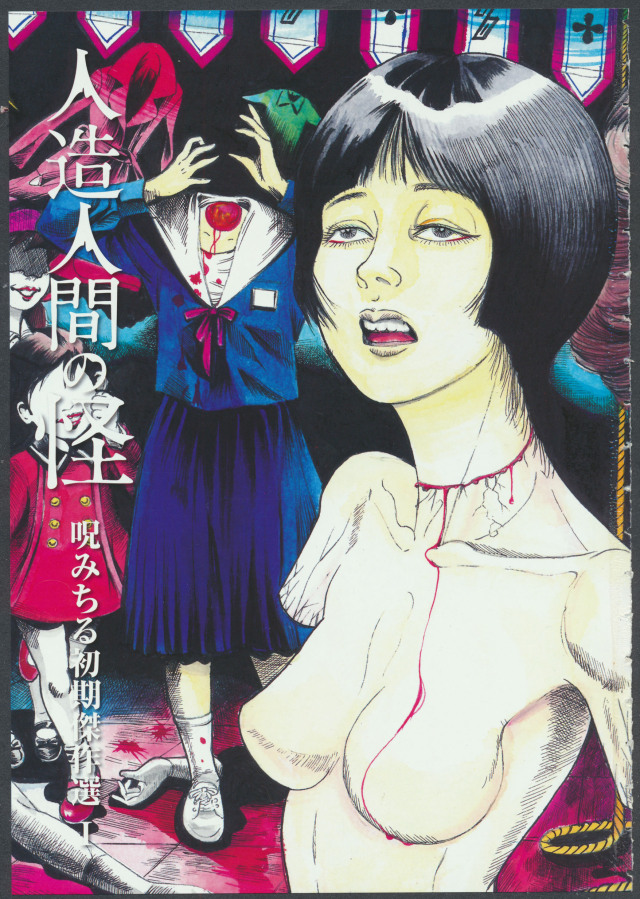
I am aware the lack of information makes this article more of a ‘hey check this out’, but my love of all things obscure and macabre hopefully leads to greater interest in self-exploration.
You can read Luger the Dwarf here, also big thanks to Dead Scantalations who support the manga community by making Japanese scans available while also promoting published work once it releases. You can shop for the original Japanese release of Michuri’s over at Mandrake. Finally, one may read the mangaka’s blog here.
More in Manga
The Summer Hikaru Died is an ongoing horror manga (currently at 4 volumes), written and illustrated by Mokumokuren. This is the second volume of the manga to be released in… I believe we are all aware of the stereotypes of certain genres in horror, specifically slasher movies. The near formulaic structure of their story is a carbon copy of the… Manga Diary of a Male Porn Star is an autobiographical account of Kaeruno Erefante’s time in the AV industry. The manga follows Kaeruno’s time from being a cock on screen… The Illustrated Guide to Monster Girls is a 4-volume, light-hearted horror/slice-of-life manga, written and illustrated by Suzu Akeko. A prolific manga creator, she has previously written and illustrated Nightmare Eater,… After contributing to periodical manga magazines such as Manga OK in the mid-60s, the ever-ambitious Taro Bonten would decide to create his own bespoke gekiga magazine in 1969 named Black… Trigger warnings for virtually everything, from child ab*se to r*pe, torture, animal ab*se, mutilation, and repeated mentions of c*ck vore. Yes, c*ck vore. And probably whatever you’re thinking, that too….The Summer Hikaru Died Volume 2 Manga Review
Final Girl Manga Review – A Slasher Parody
Manga Diary Of A Male Porn Star (NSFW) Review – Learning the Ins and Outs of AV
The Illustrated Guide to Monster Girls: Vol. 1 Manga Review – Kawaii Horror
Black Punch – The Premier Horror Manga Magazine of the 1970s
Vitiators (2022) Comic Review: One Hell of a Manga
